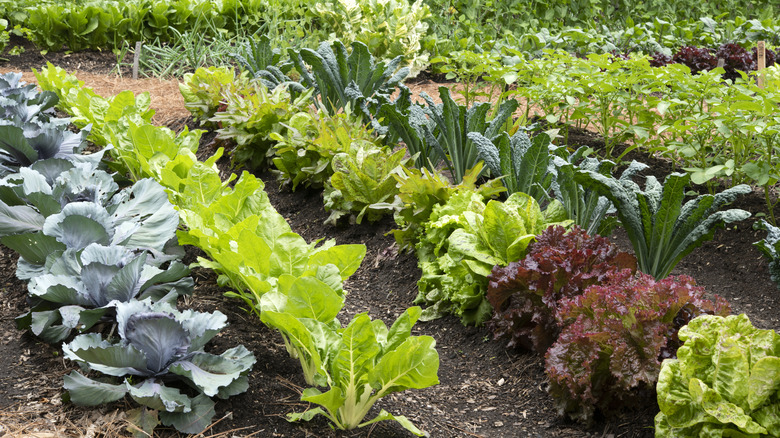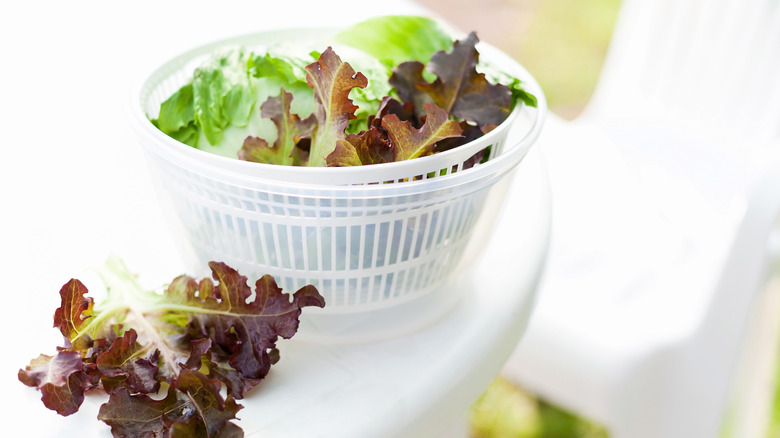The Genius Way A Salad Spinner Can Give Your Garden Soil A Boost
Finding the ideal tool to sift soil can be a task for gardening enthusiasts, especially when planting root vegetables. But why is sifting soil so crucial for root vegetables? First, root vegetables like carrots, radishes, and beets grow beneath the soil's surface. If they encounter obstructions like stones, twigs, or hard clumps of soil, their growth can be stunted. Sifting soil is also essential for aeration and drainage as it helps improve the soil's texture. Aerated soil ensures better root penetration, water drainage, and oxygen availability. Finally, fine soil maximizes the plant's ability to absorb nutrients and moisture. A common kitchen item might be the unexpected tool you've been looking for to assist with this important task. Surprisingly, a salad spinner, commonly used for drying salad greens, can also serve as an ingenious soil sifter.
First, retrieve your salad spinner and pull out the basket. Pour the soil you wish to sift into the basket. Then, place the soil-laden basket back into the main bowl of the spinner and spin it as if you're drying out vegetables. This action will kickstart the sifting, separating the fine soil from larger debris. Once done spinning, lift out the basket. At the bowl's bottom, you'll find unwanted rocks and debris. Discard these for purer soil. Depending on how much soil you're working with, you may need to repeat the process.
Why a salad spinner is a great gardening helper
A salad spinner operates on the principle of centrifugal force. This force effectively flings water away from your greens in the kitchen, leaving them dry. When you adapt this method to soil, the denser particles, like rocks or large debris, get pushed out and separated from the finer soil particles. However, there are a few ways to maximize your soil-sifting success using a salad spinner.
First, make sure you have a dedicated device. If you're an avid gardener and find this method appealing, consider dedicating an old salad spinner solely for this purpose. Mixing garden and kitchen tools isn't always the best idea. Also, avoid the temptation to fill up the basket to the brim. A moderate amount each time ensures thorough sifting. If your soil feels excessively damp, hold off on the sifting. Drier soil sifts more efficiently. If needed, spread your soil out and let it air dry for a bit. Finally, always be thorough in discarding the separated debris. These could hinder the proper growth of your vegetables if mixed in with the soil. The next time you're gearing up to plant those delicious root vegetables, give the salad spinner method a go. It is an innovative way to repurpose an old kitchen tool and ensures your soil is in the best condition for planting.

